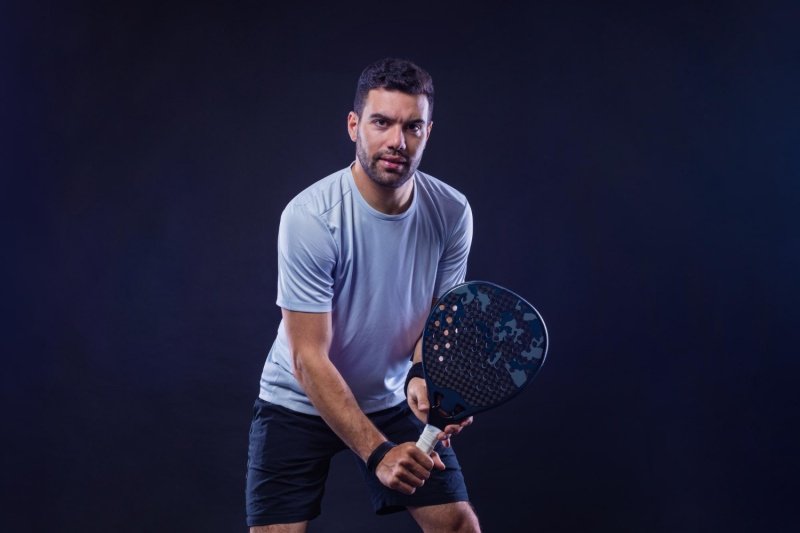Padel is growing fast around the world—but many still wonder where the USA stands in this sport’s evolution.
Padel is available in the US, with growing infrastructure and interest. Its unique version and pricing vary by region and facility.
Curious about padel in the United States? Let's explore where, how, and at what cost this sport is expanding across America.
Is there padel in the US?
Many assume padel is a European or Latin sport, but it’s also steadily growing in the US despite limited exposure.
Yes, padel is available in the US, especially in major cities like Miami, Los Angeles, and New York.
The Expansion of Padel Courts in the US
The US wasn’t an early adopter of padel, but things are changing. From my perspective at NEX Padel, we’ve seen a marked increase in demand from American distributors and clubs. This shows a rising interest in padel not just as a niche sport but a viable business opportunity.
H3: Regional Growth Differences
Some states are faster adopters due to demographics and weather.
| Region | Padel Growth Rate | Key Cities |
|---|---|---|
| Florida | High | Miami, Orlando |
| California | High | Los Angeles, San Diego |
| Texas | Medium | Houston, Dallas |
| Northeast | Low | New York, Boston |
H3: Why Growth Is Slower Than Europe
There are two key reasons:
- Tennis dominates court-based sports in the US.
- Infrastructure and club licensing require high initial investment.
But as more investors see the potential, the scene is shifting quickly.
What is the USA version of padel?
Many wonder if Americans play a different kind of padel—maybe with modified rules or different equipment.
Padel in the USA follows the international standard rules, though Americans sometimes confuse it with platform tennis1 or pickleball2.
H3: Differences in Perception
In the US, the term "padel" is often misheard as "paddle," causing confusion with similar racket sports. At NEX Padel, I often clarify this with customers who are new to the sport.
| Sport | Court Type | Ball Used | Main Confusion Point |
|---|---|---|---|
| Padel | Glass-walled court | Pressurized ball | Spelled “padel” |
| Pickleball2 | Hard court | Plastic ball | Played with a paddle |
| Platform Tennis1 | Elevated court | Spongy ball | Played in cold climates |
H3: Court Construction in the US
Most US-based padel courts are now built following the standards set by the International Padel Federation3 (FIP). However, some clubs may adapt court sizes slightly to fit existing tennis infrastructures. That adaptation doesn’t change the game much but may affect play style.
How much does it cost to play padel in the USA?
High costs can hold back sports adoption. Padel is fun, but can Americans afford to play it regularly?
Playing padel in the US can cost between $20 to $50 per hour, depending on location and facility quality.
H3: Breakdown of Playing Costs
From our experience partnering with US clubs, pricing depends heavily on city location and court availability.
| Factor | Cost Estimate (USD) |
|---|---|
| Hourly court rental | $20–$50 |
| Monthly membership | $100–$200 |
| Padel paddle4 purchase | $80–$300 |
| Group lesson (1 hr) | $30–$60 |
H3: Cost vs. Other Sports
Compared to tennis or pickleball, padel is currently more expensive in the US. That’s due to fewer courts, limited public access, and higher maintenance costs. But as supply rises, we expect pricing to become more competitive.
How many padel clubs are in the US?
Infrastructure drives growth. So, how widespread are padel clubs across the country?
There are currently over 200 padel courts in the US, with more clubs opening every month.
H3: Club Growth Over the Years
When I started manufacturing paddles at NEX Padel, we had just a handful of inquiries from the US. Today, US buyers are among our fastest-growing segments.
| Year | Estimated Padel Courts | Notes |
|---|---|---|
| 2018 | ~50 | Mostly in Florida and Texas |
| 2021 | ~120 | Entry into California and NYC |
| 2024 | 200+ | Rapid expansion into Midwest too |
H3: Where Are Most Clubs Located?
Most clubs are private or semi-private. Urban areas with wealthy demographics tend to have the earliest adoption due to higher disposable income and existing interest in niche sports.
Conclusion
Padel is gaining real traction in the US with growing clubs, standardized play, and increasing accessibility—though it’s still early days.
-
Learn why Platform Tennis is often confused with padel and the differences between them. ↩ ↩
-
Understand the similarities and differences between Pickleball and Padel. ↩ ↩
-
Find out about the International Padel Federation (FIP) and its role in standardizing the sport. ↩
-
Padel paddles are unique compared to other racket sports. Learn more about their design and use. ↩









